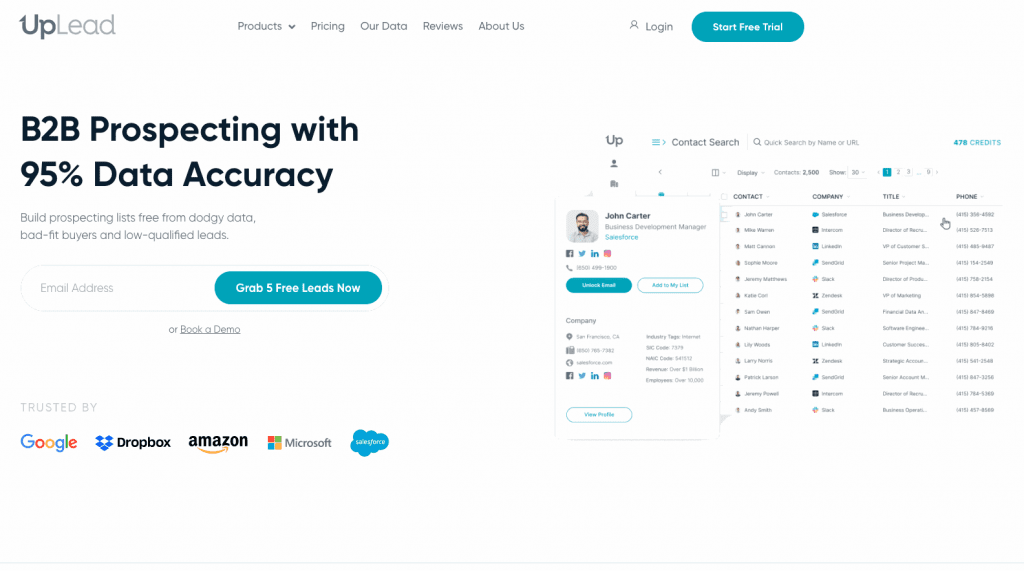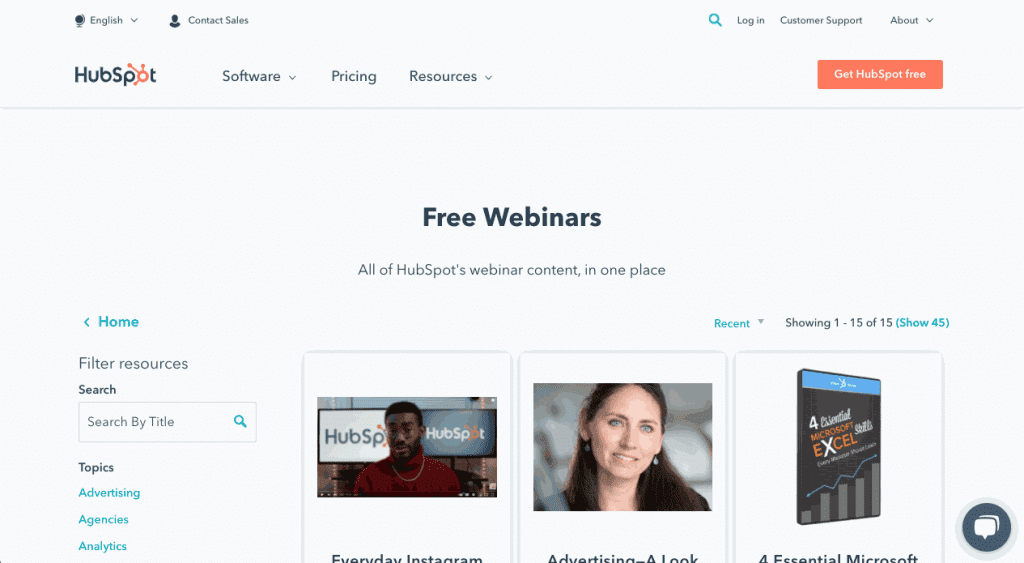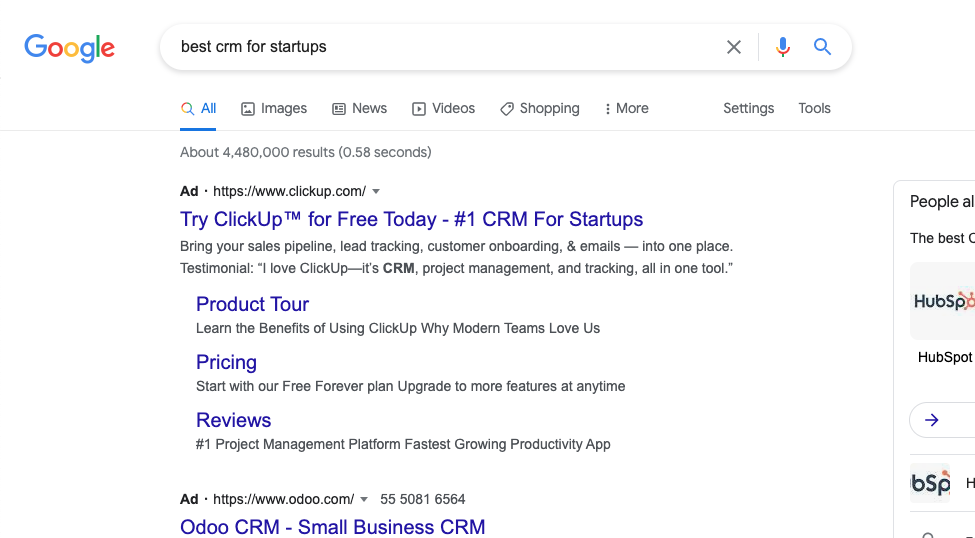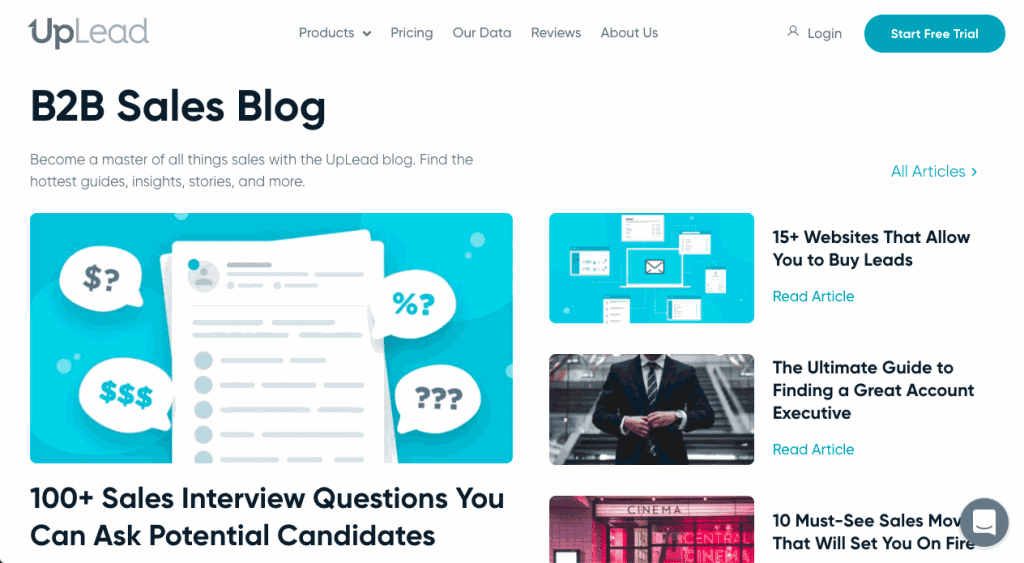Your team burns through the marketing budget. Your sales pipeline? Still bone dry. The problem isn’t a shortage of internet leads—it’s the wrong leads. Quality leads that convert into revenue remain elusive.
This guide cuts through the fluff. You’ll get a battle-tested framework for lead generation that works. Not just any leads—the ones that qualify, convert, and hit your quota. A strategic approach to pipeline predictability awaits. No more dollars wasted on prospects who ghost you.
Here’s the framework that transforms marketing spend into measurable revenue growth.
What Are Internet Leads?
An internet lead is a potential customer who has shown interest in a company’s product or service by providing their contact information through an online channel, such as a website form, content download, or webinar registration.
These leads are the lifeblood of modern B2B sales pipelines. Fresh leads with high buying intent are the most valuable but also the hardest to capture. They remain “hot” for a very short window, requiring immediate identification and outreach to maximize conversion potential.
Harvard Business Review found that firms trying to contact prospects within one hour were roughly 7 times more likely to qualify them compared to those waiting longer [Harvard Business Review “The Short Life of Online Sales Leads”].
The first 5 minutes matter most according to InsideSales research, which shows dramatic drop-offs in contact success rates within that critical window [Lead Response Management Study, InsideSales/XANT].
Aged internet leads may have cooled intent but can still provide value when redirected into systematic nurturing campaigns. The key is understanding which leads deserve immediate sales attention versus those that need marketing cultivation.
What’s the Difference Between Exclusive, Shared, and Aged Internet Leads?
Understanding lead quality types is crucial for budget allocation and conversion expectations. Here’s how the three main categories compare:
- Exclusive leads are sold to only one buyer with zero direct competition. These leads have the highest conversion rates because you’re the only company reaching out, but they command premium pricing. Exclusive leads generally convert better but cost more per lead.
- Shared leads are sold to multiple buyers, typically 3-5 companies, creating immediate competition. While more affordable, conversion rates drop significantly as prospects receive multiple calls within minutes of submitting their information.
- Aged leads are older prospects (15-90+ days) who weren’t converted when fresh. These are sold at significant discounts but have very low conversion rates due to cooled intent and potential saturation from previous outreach attempts. Aged and shared lists need faster follow-up and heavier nurture to deliver results.
The most effective strategy? Build your own exclusive, fresh lead lists using a B2B database like UpLead. This approach gives you first-mover advantage while maintaining complete control over lead quality and timing.
What Is the Difference Between Inbound and Outbound Internet Leads?
Inbound internet leads are prospects who discover your company through content marketing, SEO, or social media and voluntarily provide their contact information. These leads typically have higher intent since they initiated contact, but they require consistent content creation and SEO investment to generate at scale.
Outbound internet leads are prospects you identify and contact first using tools like UpLead’s database of 160+ million verified contacts. While requiring more initial outreach effort, outbound leads offer immediate scalability and precise targeting of your ideal customer profile.
The most successful B2B companies use both approaches. LinkedIn remains the most used B2B social platform, and 62% of B2B marketers say it generates leads [LinkedIn Marketing Solutions]. Inbound builds brand authority and captures high-intent prospects, while outbound provides predictable pipeline generation and allows you to target specific groups or market segments on demand.
How to Generate Internet Leads: 7 Battle-Tested Strategies
Here are the most effective methods for generating high quality leads, ranked by speed to results and conversion potential:
Case Study: Building a Hyper-Targeted Lead List in Under 10 Minutes

I gave myself 10 minutes to build a hyper-targeted list. Goal: Find 50+ VPs of Marketing at US-based SaaS companies with 100-500 employees that use HubSpot and are showing intent signals for “Account-Based Marketing.”
Here’s exactly how I did it using UpLead’s 160+ million verified contacts and 95% accuracy guarantee:
Step 1: Log into UpLead and navigate to the Prospector tool, choosing Contact Search from the dashboard.
Step 2: Set core firmographics – Location (United States), Industry (SaaS), Employees (100-500 using the slider filter).
Step 3: Filter by job title – Type “VP of Marketing” in the Job Title field to target decision-makers.
Step 4: Add technographics – Search and select “HubSpot” in the Technologies filter to target companies using this platform.
Step 5: Layer on intent data – Open the Intent Data tab, search and select “Account-Based Marketing” to find companies actively researching this topic via Bombora tracking.
Result: The platform returned a highly specific list meeting all criteria in under 10 minutes. Each contact included verified email addresses, direct phone numbers, and company insights – giving me everything needed to craft personalized outreach that converts.
This is the power of building your own exclusive lists versus buying shared leads from brokers. You get first-mover advantage with prospects who match your exact ideal customer profile.
Capture High-Intent Internet Leads with Bottom-of-Funnel SEO Content
Bottom-funnel content targets prospects who are actively comparing solutions and ready to make purchase decisions. These pages convert at 3-5x higher rates than top-funnel content because they capture users with commercial intent.
Strategy 1: Create In-Depth Competitor Comparison Pages
Target high-intent keywords with modifiers like “vs,” “alternative,” “best,” “review,” and “pricing.” These pages should provide fair, honest comparisons that build trust while highlighting your unique strengths.
Key elements include clear headlines positioning your product, comparison tables optimized for SEO rich snippets, social proof from customer testimonials, specific use cases, and compelling calls-to-action that drive demo requests.
Strategy 2: Dominate with “Best Tools” Listicles
Create comprehensive roundups of top tools in your category, positioning your product as the #1 choice. Structure these with numbered H2/H3 headings, hook readers with problem statements and evaluation criteria, dedicate the most detail to your product with interactive demos, and provide concise competitor summaries with “Pros/Cons/Best for” sections.
Include summary comparison charts that make it easy for prospects to evaluate options while naturally guiding them toward your solution.
Leverage LinkedIn for High-Quality B2B Internet Leads
LinkedIn remains the most effective social media platform for B2B lead generation. The platform offers both organic and paid strategies that complement each other for reaching your target audience.
Build Your Personal Brand for Organic Inbound Leads
Social sellers who actively use social media platforms consistently outperform peers who don’t leverage these channels. Focus on profile optimization with mission-driven “About” sections and “Featured” content highlights that showcase your expertise.
Develop a consistent content strategy with 1-2 posts weekly scaling to 3-5, sharing lessons from projects, industry perspectives, and helpful resources. Engage meaningfully by commenting thoughtfully on 3-5 industry posts daily to build relationships with prospects and peers.
Capture Leads at Scale with Paid LinkedIn Lead Gen Forms
LinkedIn’s native Lead Gen Forms pre-fill with profile data, reducing friction and increasing mobile optimization for better conversion rates. Best practices include selecting the “Lead Generation” campaign objective, limiting form fields to prioritize auto-filled fields like name, company, and job title.
Create high-value lead magnets, use clear calls-to-action with eye-catching visuals, and leverage thank-you pages with UTM-tracked links. These campaigns are most effective when used in retargeting campaigns for warmer prospects who have visited your website or engaged with your content.
Drive Traffic with Content Marketing for Internet Lead Generation

Content marketing generates leads by solving prospect problems and positioning your solution as the answer. Most B2B marketers report that content marketing effectively generates leads, making it a cornerstone strategy for sustainable growth in digital marketing.
The most effective approach combines SEO-optimized blog posts that capture search traffic with guest posting on industry publications to reach new customers and build valuable backlinks.
Use tools like Google Trends and AnswerThePublic to identify trending topics and common questions in your industry. Create comprehensive guides that provide genuine valuable information, avoiding fluff or repetition. Meet your audience where they are by matching their level of understanding and addressing their specific pain points.
Once your blog has substantial content, reach out to non-competitor companies with similar audiences to offer guest articles in exchange for backlinks. This drives direct traffic through clicks and improves your search engine rankings through valuable link equity.
Scale Fast with PPC Ads and Google Search

Pay-Per-Click advertising provides immediate lead generation results when executed strategically. Effective PPC campaigns focus on high-intent keywords and user personas, requiring extensive research to identify the right targets and messaging. Expect CPLs to vary widely by channel and industry; consult current benchmarks before scaling your marketing campaigns [First Page Sage Performance Benchmarks].
Start by identifying the best platform for your audience. While Google Ads dominates search advertising, other platforms like Microsoft Advertising may offer access to less competitive keywords at lower costs.
Test campaigns with smaller budgets to identify which ads and relevant keywords generate the highest conversion rates. Once you’ve proven what works, confidently scale your budget on the most effective campaigns while continuously optimizing for better performance.
Retarget Visitors with Display Ads and Online Advertising
Display advertising works best as part of a retargeting strategy, reaching users who have already visited your website and are familiar with your brand. These prospects don’t need reintroduction to your company, making them more likely to convert.
Choose between site placement, contextual, or remarketing ads based on your strategy. When creating display ads, optimize for mobile devices first and keep messaging compelling, concise, and visually clear. Create custom audiences based on browsing behavior to improve targeting precision.
Test multiple ad variations to identify the most effective creative and messaging combinations. Continuously update your display ads to prevent ad fatigue and maintain optimal performance.
Build Authority with Webinars

High-quality webinars serve as powerful lead magnets that establish brand authority while generating web leads over time. For webinars to be effective, they must provide genuine value with professional production quality.
Start with a topic that aligns with your brand identity and develop a comprehensive script. Ensure clear audio quality using professional recording equipment to make sure you’re properly recording both audio and video, proper lighting, and an appropriate background if the instructor appears on camera.
Create supporting visual aids to improve comprehension and user experience. Develop a registration form that captures essential lead information including name, company, title, and contact details to enable proper follow-up and lead scoring.
How Do You Qualify an Internet Lead? (MQL vs. SQL)
Lead qualification prevents your sales team from wasting time on prospects who aren’t ready to buy or don’t fit your ideal customer profile. The key is establishing clear criteria for Marketing Qualified Leads (MQLs) and Sales Qualified Leads (SQLs). Use behavior plus fit scoring and set a clear MQL to SQL threshold tied to speed-to-lead SLAs.
Marketing Qualified Leads (MQLs) are prospects who have shown interest through marketing activities but aren’t ready for direct sales contact. They might have downloaded content, attended a webinar, or visited pricing pages multiple times.
Sales Qualified Leads (SQLs) are prospects who have been vetted by marketing and meet specific criteria indicating sales readiness. They typically have budget, authority, need, and timeline (BANT) or have requested demos, pricing information, or direct contact with sales.
Implement lead scoring that combines explicit data (job title, company size, industry) with behavioral data (email opens, content downloads, website visits). Set clear point thresholds where leads transition from MQL to SQL status, ensuring smooth handoffs between marketing and sales teams.
How to Nurture Internet Leads That Aren’t Ready to Buy
Lead nurturing is essential for maximizing conversion rates from your internet lead generation efforts. Companies excelling at lead nurturing generate more sales-ready leads at lower cost, with B2B sales cycles averaging 3-9 months requiring systematic follow-up and phone calls.
Here’s a four-step strategy that transforms cold leads into sales opportunities:
Step 1: Segment leads based on lifecycle stage, behavioral data, and firmographics. Create distinct nurture tracks for different industries, company sizes, and engagement levels to ensure relevant messaging.
Step 2: Create automated email marketing campaigns with progressive content delivery. Start with immediate value (ebook delivery), follow with related blog posts after 3-4 days, share case studies after one week, invite to webinars after two weeks, and include soft calls-to-action after three weeks.
Step 3: Use social media ads retargeting on LinkedIn and Facebook with tracking pixels to reinforce email campaigns across multiple channels. This multi-touch approach increases brand recall and conversion rates.
Step 4: Implement lead scoring with explicit scoring (+20 for Director+ title, +15 for target industry) and implicit scoring (+5 email open, +15 case study download, +25 pricing page visit, +50 demo request). Set a 100-point threshold that triggers Marketing Qualified Lead (MQL) status and sales team notification.
How Much Do Internet Leads Cost?
Internet lead costs vary dramatically by industry, lead quality, and generation method. Understanding these benchmarks helps you budget effectively and set realistic expectations for your marketing strategies. Benchmarks vary by channel and industry, so consult live tables from ongoing studies and track your own CPL and customer acquisition costs.
Cost Per Lead ranges vary significantly across industries:
- Healthcare: $100-$400 per lead
- Technology/Software: $150-$250 per lead
- Legal Services: $649-$650 per lead
- Financial Services: $300-$760 per lead
- Real Estate: $50-$200 per lead
- Insurance business: $75-$300 per lead
Lead generation method also impacts cost. Organic methods like SEO and content marketing have lower per-lead costs but require significant time investment. Paid methods like PPC and display advertising provide immediate results at higher per-lead costs but offer precise targeting and scalability.
B2B database providers like UpLead offer a middle ground, providing high quality leads at predictable costs without the competition and quality issues of shared lead marketplaces. This approach helps you stay ahead of the competition by reaching prospects first.
How Do You Measure the ROI of Your Internet Leads?
Measuring lead generation ROI requires tracking the complete funnel from initial lead capture through customer conversion and lifetime value. Here are the essential formulas and benchmarks:
- Cost Per Lead (CPL) = Total Campaign Cost ÷ Total New Leads
- Lead-to-Customer Conversion Rate = (New Customers ÷ Total Leads) × 100
- Customer Acquisition Cost (CAC) = Total Sales & Marketing Expenses ÷ Number of New Customers
- Customer Lifetime Value (LTV) = Average Revenue Per User ÷ Customer Churn Rate (for SaaS) or Average Purchase Value × Average Purchases × Customer Lifespan
- Final ROI = [(Total Revenue from Leads – Total Lead Generation Cost) ÷ Total Lead Generation Cost] × 100
Industry benchmarks show B2B lead-to-customer conversion rates typically fall within a 2-5% range [UpLead Benchmark Data]. Healthy LTV to CAC ratios typically range between 3:1 to 5:1 according to standard benchmarks [UserGuiding LTV:CAC Analysis].
For example, a B2B SaaS company with $20 CPL, 5% conversion rate, $600 CAC, and $15,000 LTV would achieve 2400% ROI with a 25:1 LTV:CAC ratio, indicating highly effective lead generation investment that helps boost sales significantly.
What Is the Best Tech Stack for Managing Internet Leads?
A modern lead management tech stack requires integration across four key layers to maximize conversion rates and pipeline efficiency:
Foundational Layer (Data & Prospecting): B2B data providers like UpLead (160+ million contacts with 95% accuracy guarantee, vendor-reported) [UpLead Product Pages] and ZoomInfo (comprehensive GTM platform with intent data) provide contact intelligence and buyer intent signals essential for targeted outreach.
Central Hub (CRM): Salesforce Sales Cloud (approximately 23.9% market share with extensive customization) [CRMsearch/IDC Analysis] and HubSpot CRM (user-friendly with powerful free version and integrated marketing tools) manage all customer relationships and pipeline tracking.
Engagement Layer: Marketing automation platforms like HubSpot Marketing Hub (full inbound suite with AI-powered email creation) and ActiveCampaign (800+ automation recipes for SMBs) handle lead nurturing, while sales engagement platforms like Outreach (AI-powered Smart Assist tools) [Outreach Product Pages] and Salesloft (conversation intelligence and cadence automation) manage direct sales outreach.
Capture Layer: Website tools like Leadfeeder (identifies visiting companies) and conversational marketing platforms like Intercom (Fin AI chatbots) [Intercom Product Pages] and Drift (AI Chat agent, now part of Salesloft ecosystem) [Salesloft Acquisition Announcement] convert website visitors into qualified leads through real-time engagement.
The key is ensuring high-quality data flows from the foundational layer, as all other tools depend on accurate contact and company information to function effectively and help you build rapport with potential customers.
A Note on Compliance: Handling Internet Lead Data Legally (GDPR & CCPA)
Data compliance is critical for sustainable lead generation operations. In the US, B2B lead data is governed by the CAN-SPAM Act, which requires opt-out mechanisms, valid postal addresses, and clear sender identification, with civil penalties up to tens of thousands of dollars per email violation [FTC CAN-SPAM Guide].
State privacy laws like CCPA/CPRA now cover business contacts (B2B exemption expired January 1, 2023) [CPRA B2B Exemption Sunset], giving prospects rights to know, delete, correct, and opt-out of data sale or sharing. Multiple states have comprehensive privacy laws as of 2025, with the number changing regularly [IAPP State Privacy Law Tracker].
GDPR requires explicit consent for EU prospects and gives consumers extensive rights over their data, with non-compliance fines up to €20 million or 4% of global annual turnover (whichever is higher) [GDPR Regulation Text].
Best practices include ensuring web forms have clear consent language and privacy policy links, understanding your legal basis for outreach, honoring opt-out requests within 10 business days, and providing “Do Not Sell or Share” links where required. Using verified, accurate data from reputable providers helps maintain compliance and professional reputation while collecting basic information from prospective customers.
The Future of Internet Leads: AI, Automation, and Predictive Analytics
Artificial intelligence is reshaping lead generation through three key areas that forward-thinking revenue teams are already implementing:
- AI-Powered Predictive Lead Scoring: Machine learning analyzes historical CRM data, behavioral patterns, demographics, and firmographics to identify conversion likelihood with greater accuracy than traditional scoring methods. Companies report significant increases in lead generation efficiency through better prioritization and reduced human bias, helping agents find more leads and close more deals.
- Predictive Analytics & Intent Data: AI analyzes billions of signals from first-party and third-party sources to identify accounts actively researching purchases before they make direct contact. This allows sales teams to reach prospects at the optimal moment, with most B2B marketers reporting improved targeting ability through intent data integration.
- Conversational AI: AI chatbots and virtual assistants handle initial inquiries, lead qualification, demo scheduling, and routing 24/7. Gartner predicts that most B2B seller work will involve conversational AI in the coming years, with a significant percentage of daily work decisions made autonomously by Agentic AI systems [Gartner AI Predictions].
Current marketing research shows that many marketing organizations have fully implemented AI, with high-performing teams being significantly more likely to have adopted these technologies [Salesforce State of Marketing Report].
The foundation for effective AI implementation remains high-quality, verified contact data. Platforms like UpLead provide the accurate, comprehensive datasets that AI systems need to deliver reliable predictions and recommendations for local businesses and enterprise clients alike.
FAQ: Your Pressing Questions on Internet Leads Answered
What is the best website for internet leads?
The best website for B2B internet leads is a platform that provides high-accuracy, exclusive data with advanced filtering capabilities. While lead marketplaces sell shared leads to multiple buyers, a B2B data provider like UpLead allows you to build your own fresh, exclusive lists with a 95% accuracy guarantee, using over 50 filters including intent data and technographics to ensure every new lead matches your ideal customer profile.
How can I get internet leads for free?
You can generate free internet leads through organic methods like content marketing, SEO optimization, and building a professional presence on social media platforms like Facebook and LinkedIn. Creating valuable content that solves your audience’s problems attracts high-intent prospects over time. However, for immediate, scalable results, using a targeted B2B database provides the most efficient path to qualified prospects and helps you create a stronger customer base.
How quickly should you respond to an internet lead?
You should respond to an internet lead as quickly as possible, ideally within the first hour. Harvard Business Review research shows that firms trying to contact prospects within one hour were roughly 7 times more likely to qualify them compared to those contacting them after an hour. InsideSales research demonstrates dramatic drop-offs in success rates within the first 5 minutes. Speed is a critical factor in converting high-intent internet leads before they move on to competitors.
How do I get internet leads?
You can get internet leads through multiple proven methods: building targeted lists with B2B databases like UpLead, creating valuable content that attracts prospects through SEO, running targeted PPC campaigns using relevant search terms, leveraging LinkedIn for both organic and paid lead generation, and developing lead magnets like webinars or ebooks. The most effective approach combines both inbound content marketing for long-term growth and outbound prospecting for immediate pipeline generation. Insurance agents and other professionals can access these leads across the next six months and beyond to create a unique opportunity for growth.
What’s the difference between inbound and outbound internet leads?
Inbound internet leads come to you first – they discover your brand through your website, content, or online advertising and express interest. Outbound internet leads are prospects you identify and contact first using databases or prospecting tools. Both approaches matter for building a comprehensive sales strategy that reaches your target market.
Conclusion
Building a predictable sales pipeline from internet leads requires a strategic approach that prioritizes quality over quantity. The framework outlined here—from understanding lead types and generation strategies to qualification, nurturing, and measurement—provides everything you need to stop wasting budget on low-converting prospects.
The key is starting with high-quality, verified data that gives you first-mover advantage with exclusive prospects. UpLead’s database of 160+ million contacts with 95% accuracy guarantee provides the foundation for all successful lead generation strategies that help you access the right clients and boost your business.
Try UpLead free today and start building the exclusive lead lists that will transform your sales pipeline and hit your revenue targets.





